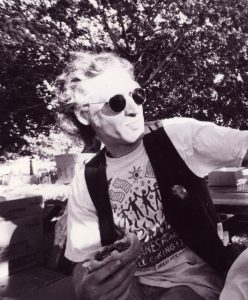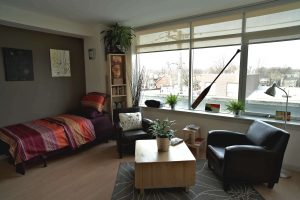 Components: Edmond – Self Guided Learning/ Lecture
Components: Edmond – Self Guided Learning/ Lecture
Timing: 40 Minutes
Mode: In-class; Online
Supported by the Learning Lens and Components in Context, these components and accompanying text provide instructors with the basic components for a lecture or a self guided learning session on Edmond Yu, PARC, and the challenges of providing good housing and social supports for people with mental health difficulties. Components include the 24 recommendations made by the Coroner investigating Yu’s death and insightful audio selections by two individuals closely connected to the story of Yu and PARC.

For flipped classroom use, students need to work with the Values Line learning activity, working through components in advance of the lecture and the in-class discussion. Instructors need to have learners take their position (agree, neutral or disagree) for the Values Line activity before they are exposed to the contents of the lecture. Learners can work through this material independently or listen to an in-class lecture. Learners working at a higher level can use the inquest recommendations as a platform for an extended inquiry into human rights and best practice in community mental health.
Bob Rose, an outreach worker with PARC, met Edmond at the end of 1996, standing outside the rooming house from which he was being evicted. Though reluctant at first to make a connection with Bob and with PARC, Edmond slowly opened up to allow them to help. Listen to Bob Rose discuss Edmond’s Homelessness.
Able to secure a short-term crisis bed for Edmond at Toronto’s Gerstein Crisis Centre, Bob hoped this would buy him some time to find Edmond secure long-term accommodation, but on February 20, 1997, one week after his Gerstein placement, Edmond was killed. Shortly after Edmond’s death, Bob Rose summarized the tragedy in PARC’s 1996-1997 annual report as “what happens when the world chooses to make war on poor people instead of making war on poverty.” Listen to Bob Rose’s reflections on Edmond’s impact in the community and on him.

Victor Willis, then working at the Gerstein Crisis Centre and a PARC Board Member, remembers meeting Edmond the day before he was killed. He also frames Edmond Yu’s death within a larger story about the limitations of the mental health system. Listen to Victor Willis discuss his brief encounter with Edmond and the failure of the mental health system.
Edmond’s death further mobilized PARC staff and members to advocate for social justice, supportive housing, and a better mental health system. A coroner’s inquest resulted in 24 recommendations, one of which was that more funding should be given to support the establishment of safe-houses and other forms of housing for consumer-survivors in Toronto. Download and read the 24 Coroner’s Recommendations. Transcription.
PARC’s very establishment in 1980 was a response to an inadequate community mental health system that left psychiatric survivor/consumers without viable housing options. Listen to Victor Willis, now the Executive Director at PARC, discuss the relationship between deinstitutionalization, Parkdale, PARC, and housing.
Throughout the whole process of planning and lobbying for Edmund Place, one of the tests that PARC applied to its ideas was to ask themselves “could Edmond have lived here?” Listen to Victor Willis describe the housing on the 3rd floor of PARC, and some of the principles behind Edmond place.
Download and read PARC’s rationale for naming the building after Edmond Yu.
Despite Edmond Place being widely recognized as a success, there are reminders everywhere that more needs to be done to provide safe housing for vulnerable members of our society. Listen to Bob Rose reflect on the fact that Edmond Place represents many tenants’ first real form of housing.





 Français
Français